The Offbeat Attractions of Chhattisgarh
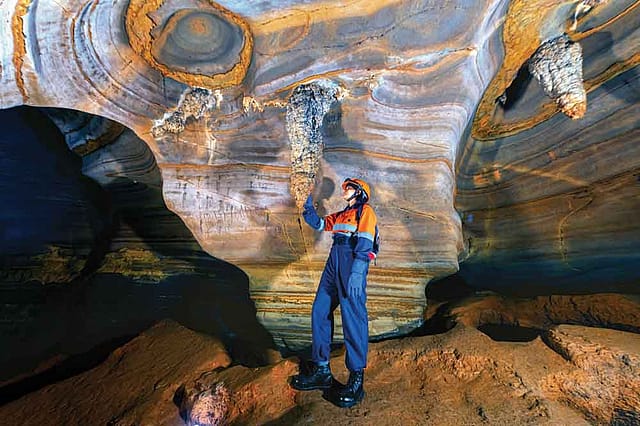
The state of Chhattisgarh is renowned for its rich cultural heritage and archaeological sites. It is also home to some of the most prominent sites of prehistoric rock art in India. These sites are located in rock shelters and caves in the dense forests of the Vindhya and Satpura ranges, and the paintings found here are estimated to date from the Mesolithic to the ancient period. Central India is replete with rock art sites but, until recently, the ones in Chhattisgarh weren't known widely enough. The painted rock shelters of Chhattisgarh were first discovered by C.W. Anderson in the early part of the 20th century. These paintings provide a glimpse into the lives, beliefs, and culture of the people who lived in these regions thousands of years ago.The rock paintings of Chhattisgarh were made using natural pigments such as red and yellow ochre, charcoal, and lime. The artists used their fingers, animal hair brushes, and twigs to create these paintings, which have survived for thousands of years despite the harsh weather conditions and natural erosion. The paintings cover a wide range of subjects. They depict scenes from the everyday lives of prehistoric humans, their hunting and gathering practices, and their religious beliefs. They also include depictions of animals such as elephants and tigers.
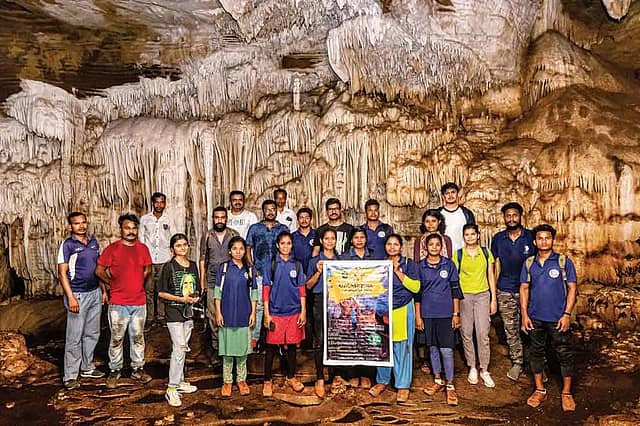
The painted rock shelters and caves are not only significant from an archaeological and historical perspective but also hold immense cultural and spiritual significance for the local communities. These paintings are revered as sacred by many tribal communities in the region, who continue to hold traditional rituals and ceremonies at these sites. Apart from their religious and spiritual significance, the paintings found in the rock shelters and caves of Chhattisgarh also provide valuable insights into the daily lives of prehistoric humans. The depiction of scenes of hunting and gathering indicate the importance of these activities in prehistoric societies. They also depict scenes of communal life, including dancing and feasting.
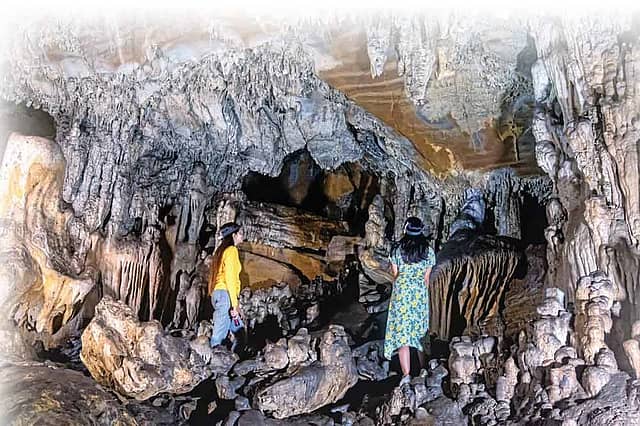
Some of the most important rock art sites of Chhattisgarh are in Raigarh, Kanker, Narayanpur, Bastar, Kondagaon, Dantewada and Sarangarh. The most prominent of these sites are Balarao in the south, Ushakothi I and Kabra Pahar in the north, Jogdadeo (which made headlines when people throught the figures here resembled aliens) and the nearby Shitalama shelter.
RAIGARH
Raigarh is known as the 'Cultural Capital of Chhattisgarh'. It is famed for the Raigarh Gharana of the Kathak dance form as well as for classical music. Raigarh flourished as a centre of art and culture under the patronage of Maharaja Chakradhar Singh. Its tourist attractions include Ram Jharna and the Gomarda Wildlife Sanctuary. Ram Jharna is about 18 kilometres from the District headquarters. It has a natural water source. It is believed that Lord Rama visited this spot during his period of exile and drank water from the water source. Hence, the name Ram Jharna. It is an excellent picnic spot. The Gomarda WLS is situated near Sarangarh in hilly terrain. Spread over 275 sq km it is one of the ideal destinations for adventure seekers and also boasts a wide variety of wild animals, like deer, wild buffaloes, sloth bear, wild boar, Indian wild dog and jackals.
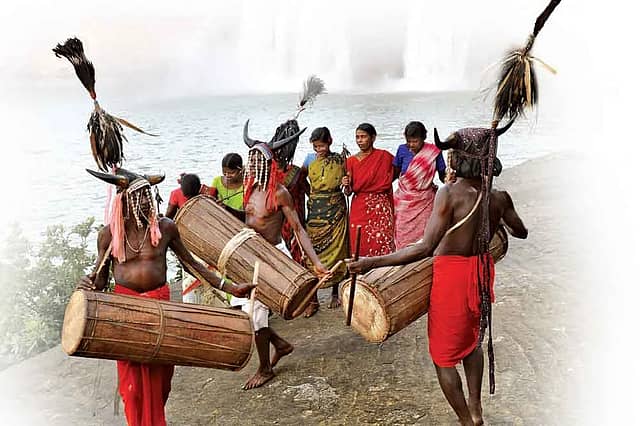
Raigarh is one of the most important regions for rock art in Chhattisgarh. Singhanpur is a site located about 20 kilometres northwest of Raigarh on the Raigarh–Kharsiya road. The cave has rock paintings, which have become faint. They portray a ladder man, mermaids, animal figures, hunting scenes and much more. Generally drawn in red ochre, paintings of various animals can also be seen in the Singhanpur cave.
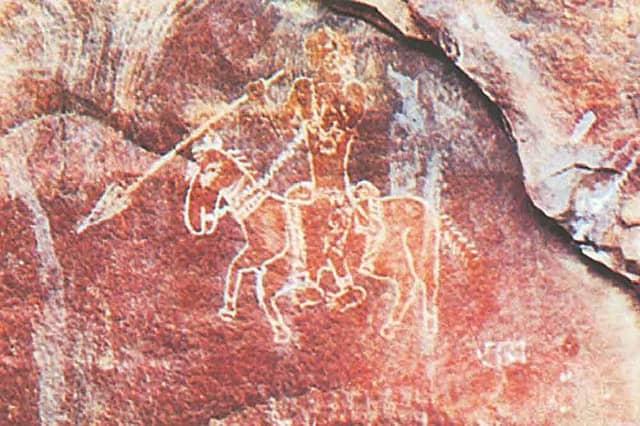
BASNAJHAR
BASNAJHAR is a village situated at a distance of about 17 kilometres southwest of Singhanpur. There are more than 300 paintings present in the hills of this village in which beautifully drawn scenes of decorated elephants, monkeys, mermaids, horses, wild buffaloes, hunting scenes, dancing scenes, geometric designs, etc are worth seeing.
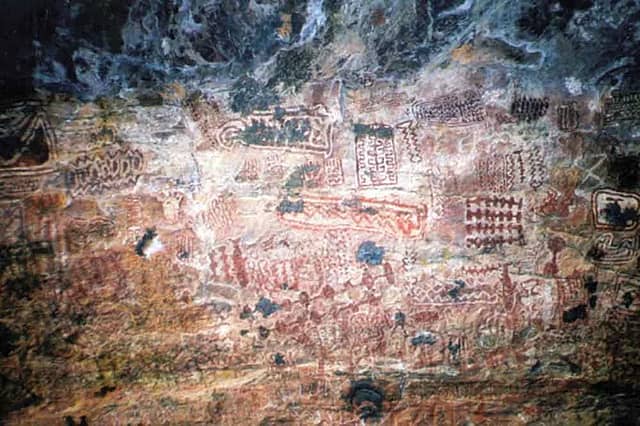
Just 8 kilometres to the east of the district headquarters of Raigarh lies Kabra Pahar, one of the most famous rock art sites in Chhattisgarh. The name means 'Spotted Mountain' and the site lies in Bhojpalli village. The rock art is at a foot of a large vertical cliff. Locals still conduct religious ceremonies here, most importantly around Holi. Geometric designs, human figures and a variety of animals are represented in the reddish-brown paintings, which reach up to a height of 6-8 metres. Some of the animals have decorated bodies and are a sight to behold. The paintings are in a better state of preservation.
The USHAKOTHI I site lies in Karmagarh village, reached by crossing a dense forest. The site is noted for a large number of geometric motifs which are striking for their vivid use of colour. The motifs are complex and mostly rectangular, although some are circular. There are images of humans, animals and natural objects like flowers and leaves.
USHAKOTHI II, a completely different site, lies at Shivpur village within the Gomarda Wildlife Sanctuary, about 180 kilometres northeast of Raipur. There are footprints here and the faded remnants of old drawings. There are some human figures as well.

If you travel just 30 destinationattractionskilometres north of Raigarh, you come across over 300 rock paintings at Karmagarh. Geometric designs, multi-coloured figures of humans and animals make it a popular tourist attraction.
Located 72 kilometres north of Raigarh (6 kilometres southeast of Dharamjaigarh) are the Bani Hills of Ongna village. These hills are home to more than 100 rock paintings. It is interesting to know that this shelter has many superimpositions of paintings. Big humped bulls and decorated headgears of human figures are special to this shelter. Creative dance forms have also been portrayed with great skill in the rock paintings of Ongna.
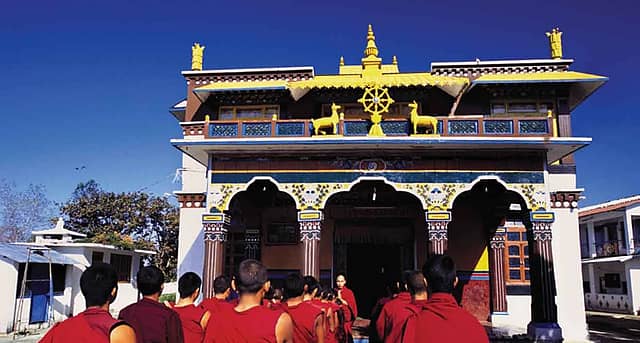
The endless treasure of art continues to allure tourists at Khairpur, situated about 12 kilometres north of Raigarh near Tilakhol reservoir. There are several dancing scenes and animal figures belonging to the pre-historical period present in the shelters here.
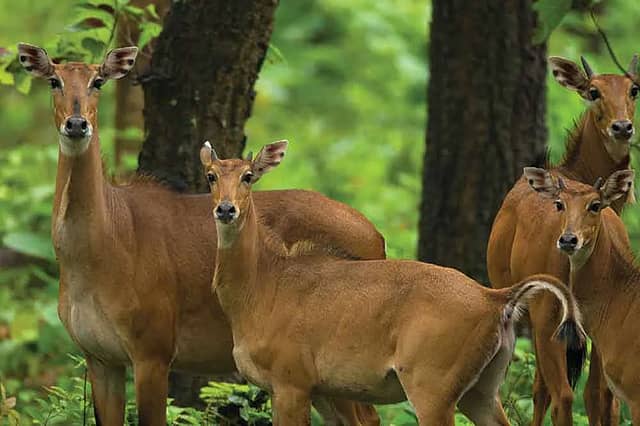
Located on the Bilaspur-Raigarh road is Kharsiya. Just 8 kilometres to the west of Kharsiya is Botalda village. On the hilly range here is a cave called the Singh Gufa, located at a height of 2,000 feet. Unique rock paintings ranging from the Mesolithic to the historical period can be found here. These include animal figures, human figures, hunting scenes, and geometric designs. About 66 kilometres northwest of Raigarh or 12 kilometres from Bilaspur on the Bilaspur-Kharsiya Road, in between the villages of Sutighat and Patrapali, rock paintings are found in the hills of the ranges. These are also known by the name of Bhanwarkhol. Here, we come across paintings of mermaids, wild buffaloes, bears, hunting scenes, palm impressions, geometric designs, and swastikas. These rock paintings were created from white stone and other different coloured stones.
AMARGUFA is situated about 11 kilometres south of Sonabarsa village, and just 2 kilometres from Kharsiya on the main road. Here animal figures, human figures, hunting scenes, etc are depicted.
BASTAR
BASTARThe Kanker and Kondagoan districts of the Bastar Division also boast some prominent sites.
In 2014, the Jogdadeo Shelter, which lies in Gotitola village in the Kanker region, came into the international limelight, after a news article was published stating that rock paintings of aliens had been found here. Of course, this was a false interpretation. These are human figures with handprints on top. There are also images of dancers, some of them pregnant women.
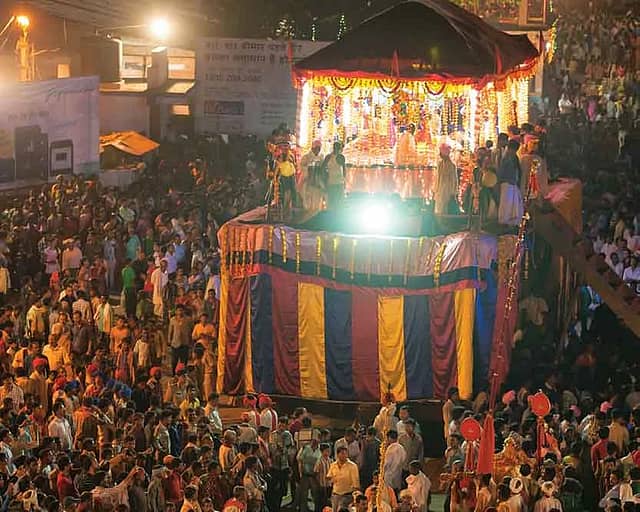
Not too far from Jogdadeo, is the Shitalama Shelter in Chandeli village. The shelter consists of a large pile of rocks lying on the side of fields. A temple dedicated to a local goddess, Shitalama, who lends the shelter its name, is nearby. A shelter has been created here by a large rock falling on some other rocks. A human figure here was mistaken for the image of a UFO when it was published upside down. It did lead to the site becoming quite popular.
Jogi Gufa I and II in Udkuda village are just a few kilometres from the Shitalama Shelter. They get their name from the fact that they were the abodes of hermits.
SARGUJA
SARGUJAThe Sitabenga and Jogimara Caves in Sarguja District lie about 45 kilomteres southwest of Ambikapur, the District headquarters. These ancient cave monuments are nestled on the north side of the Ramgarh hills in Puta village. Dated between the 3rd century BCE to 1st century BCE, they are notable for their non-religious inscriptions in Brahmi script and Magadhi language, and one of the oldest coloured frescoes in Asia. According to some scholars, the Sitabenga cave is the oldest performance theatre on the Indian subcontinent, while others suggest it may have been a resting place (dharmashala) along an ancient trade route. There are eight panels of murals in the Jogimara cave; most are quite faded. They were originally produced in three colours and using a cruder method. The original paintings were repainted over by someone with an intention to restore and enhance them. This effort likely happened in the second half of the 1st millennium CE.The rock shelters and cave paintings of Chhattisgarh are a testament to the rich cultural heritage of the region. These paintings provide valuable insights into the lives, beliefs, and practices of the state. According to experts, these sites are a few thousand years old, going by the excellent state of preservation of the art. Many have also been painted over by later artists although still from ancient times.

In recent years, efforts have been made to preserve and protect these invaluable archaeological and cultural sites. The Chhattisgarh Government has taken several steps to promote tourism in the region while also ensuring the conservation of these ancient sites. This includes the implementation of strict conservation measures to protect the paintings from natural and human-induced damage.
WATERFALLS OF CHHATTISGARH
Chhattisgarh, with a massive green cover and spectacular national parks, is also home to a plethora of natural wonders, including some magnificent waterfalls that are a delight for tourists and locals alike. Two of the most famous waterfalls in Chhattisgarh are the Chitrakote Falls and Tirathgarh Falls.
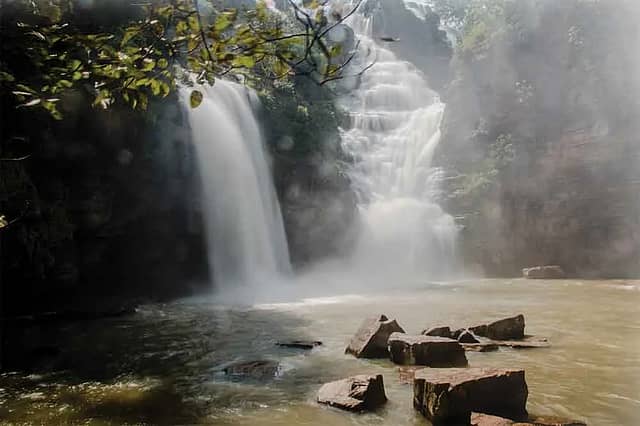
Chitrakote Falls, also known as the "Niagara Falls of India," are located on the Indravati River in Bastar. The falls are approximately 100 feet high and span a width of about 985 feet. The falls are at their best during the monsoon season when the Indravati River is in full flow. The water cascades down the rocks with immense force, creating a misty spray that adds to the beauty of the falls. The falls are surrounded by lush green forests and provide a stunning backdrop for photography enthusiasts. Visitors can take a dip in the cool and refreshing waters of the falls or take a boat ride to explore the surrounding areas. There is excellent tourist infrastructure here.
The Tirathgarh Falls are located in the Kanger Valley National Park in Bastar. The waterfall is approximately 300 feet high and is surrounded by dense forests and hills. The water cascades down a series of steps, creating a picturesque view that is a delight to behold. The falls are at their best during the monsoon season when the water gushes down with full force. Visitors can take a dip in the natural pool formed by the falls or trek to the top to enjoy a bird's-eye view of the surroundings. Famous for its unique stalactite and stalagmite formations, the Kutumsar Caves are hidden amid a dense sal forest inside the Kanger Valley National Park.
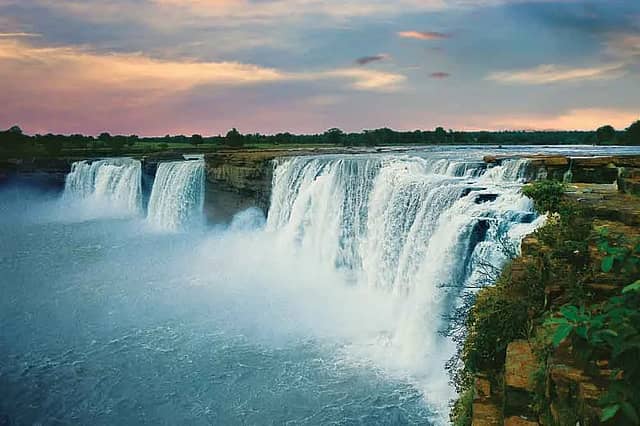
Both Chitrakote and Tirathgarh Falls offer a glimpse of the natural beauty that Chhattisgarh has to offer. They are not just tourist attractions but are also of great significance to the local communities. The falls are believed to have mythological and religious importance, and locals often visit them to offer prayers and seek blessings.
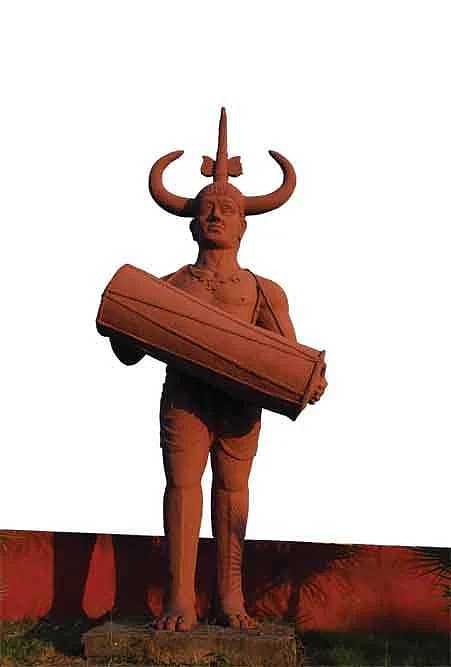
Apart from Chitrakote and Tirathgarh, Chhattisgarh is home to many other waterfalls, each with its unique charm and beauty. Some of the other famous waterfalls in Chhattisgarh include Tamra Ghoomar Falls, Mandawa Falls, and Chitradhara Falls. Visitors can also explore the nearby forests and hills that are home to a rich diversity of flora and fauna. These natural wonders along with the spectacular rock art sites can make any trip to Chhattisgarh an unforgettable experience.
(A marketing initiative by Open Avenues)